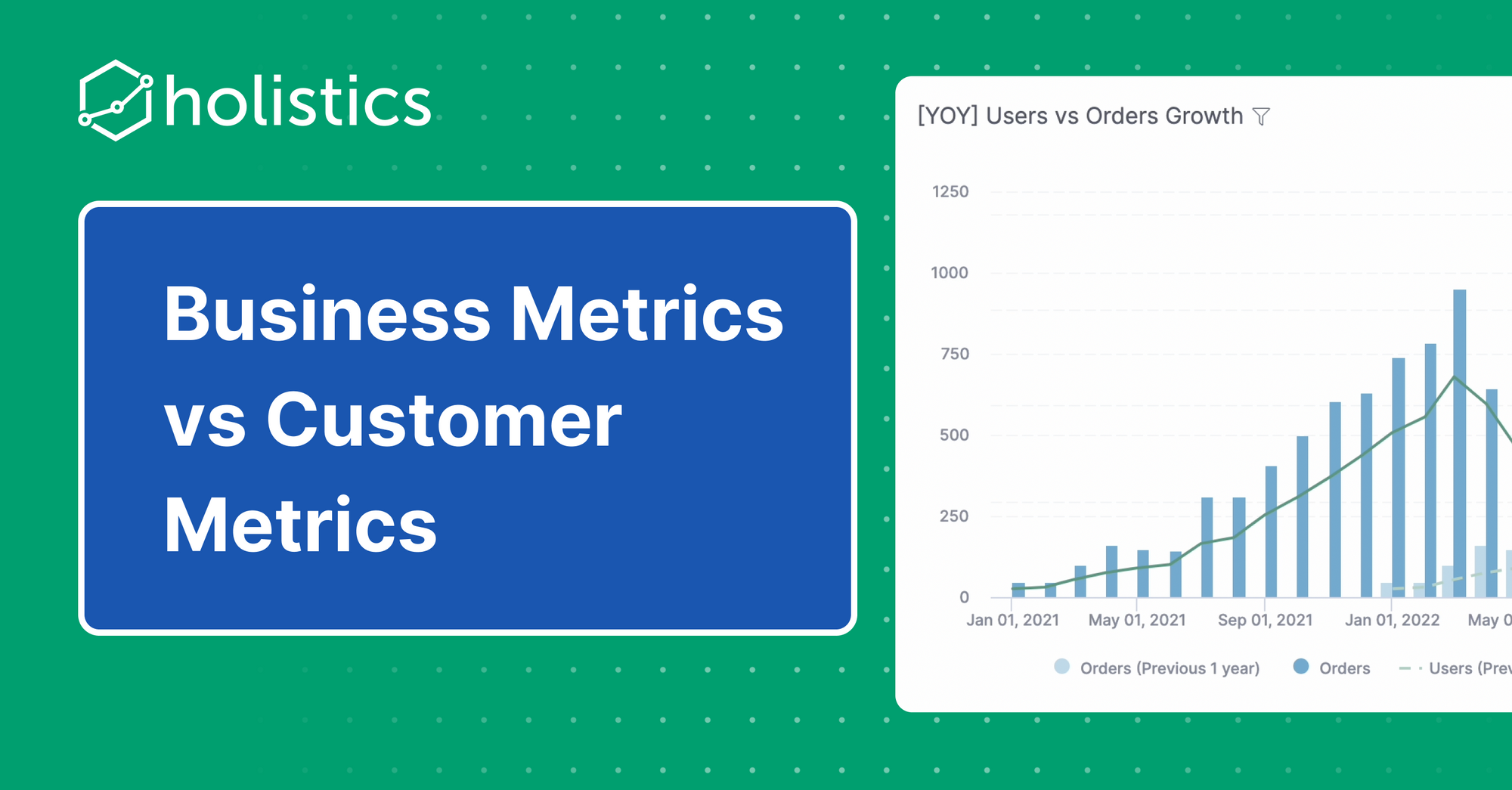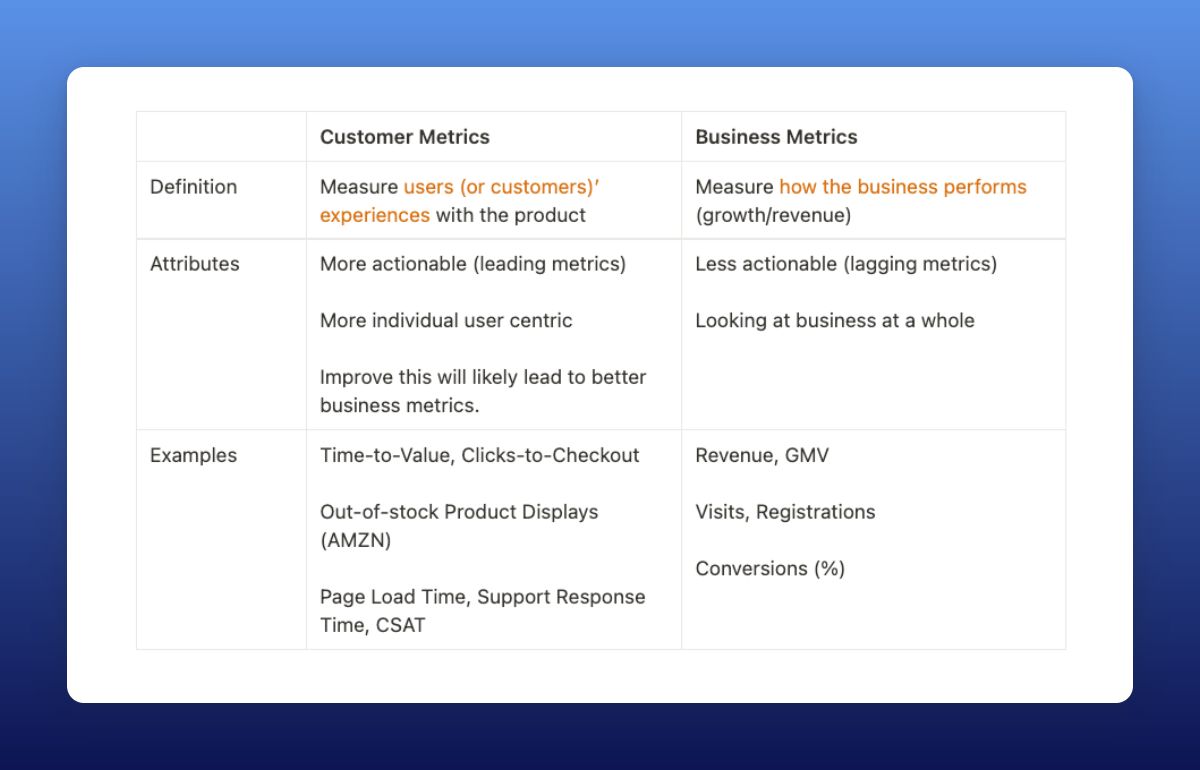Business Metrics vs Customer Metrics

What are the typical metrics that you’d normally look at weekly?
If you're like me (a startup founder), you would look at those that tell how your business is performing. For a SaaS company that’s ARR (Revenue), NRR (Retention), Signups, Trial Conversions, Visitors, etc.
We recently had a chance to speak with Colin Bryar, the co-author of Working Backwards. Colin commented, and I paraphrase:
“Your customers actually don’t care about how your business performs or how many customers you have. They care about what value they get from your product.
At Amazon, we focus on thinking from the customer experience, not (just) from the business metrics perspective. We draw out the customer journey, figure out the metrics that best represent their experience, and then optimize those. Because if our customer experience goes up, everything else (revenue, traffic, sellers, cost structure) improves as well.”
He continues:
“For example, we track a metric called Out-of-stock Product Displays, which is the number of times a visitor views a product, but it went out of stock. This negatively affects the experience. The team’s job is to continually improve this metric.
These ‘customer’ metrics are usually actionable, because the team has a higher degree of control over these metrics. They can talk to the Fulfillment team to stock those SKUs sooner, or suggest Platform team to make adjustment to deemphasize such listings.
This is not to say we didn’t care about revenue/profits at Amazon. We run a tight Weekly Business Review (WBR) process where we review 20s to 30s metrics weekly, from high-level like revenue to to operational details like the ones above.”

For someone who works regularly with data like me, this is a moment of epiphany.
Although we (at Holistics) are obsessed over the customer journey / customer experience, on the metrics front we've been doing the exact opposite. We track only the business-oriented metrics: Visits, Trials, Activated, Converted, and Revenue.
Those tell us how our business performs, but say very little about the actual users experiencing the product.
Accordingly to Colin, we should also be tracking customer-experienced metrics like Time-to-Value, Support Response Time, CSAT, Page Load Time, etc. Anything that can measure or approximate the actual experience of our users.
Call us silly, because obviously things like CSAT and Time-to-Value are popular metrics every SaaS textbook talks about. But we never managed to put two and two together, and classify them as "customer metrics" vs "business metrics".
A small shift in perspective, but really a big aha moment for us.
What do you think?
p/s: Colin is really awesome by the way. He now runs a consulting business helping companies adopt the unique Amazon's business principles described in the book. Do check out his work. (We have no affiliation/financial incentive whatsoever by saying this, just want to share something potentially useful).
If you're interested in more non-obvious think pieces like this one, check out:
What's happening in the BI world?
Join 30k+ people to get insights from BI practitioners around the globe. In your inbox. Every week. Learn more
No spam, ever. We respect your email privacy. Unsubscribe anytime.

